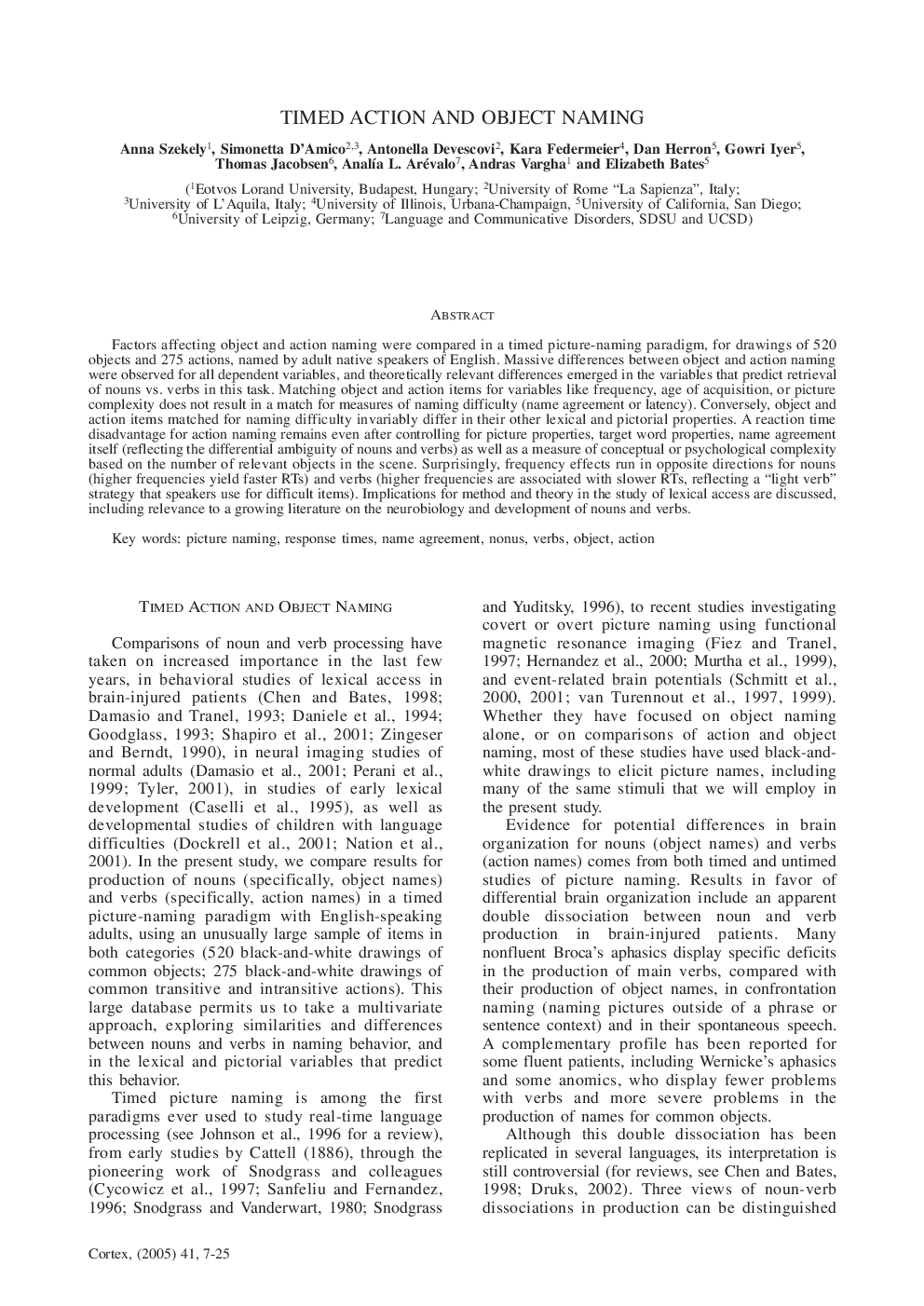| Article ID | Journal | Published Year | Pages | File Type |
|---|---|---|---|---|
| 10463538 | Cortex | 2005 | 19 Pages |
Abstract
Factors affecting object and action naming were compared in a timed picture-naming paradigm, for drawings of 520 objects and 275 actions, named by adult native speakers of English. Massive differences between object and action naming were observed for all dependent variables, and theoretically relevant differences emerged in the variables that predict retrieval of nouns vs. verbs in this task. Matching object and action items for variables like frequency, age of acquisition, or picture complexity does not result in a match for measures of naming difficulty (name agreement or latency). Conversely, object and action items matched for naming difficulty invariably differ in their other lexical and pictorial properties. A reaction time disadvantage for action naming remains even after controlling for picture properties, target word properties, name agreement itself (reflecting the differential ambiguity of nouns and verbs) as well as a measure of conceptual or psychological complexity based on the number of relevant objects in the scene. Surprisingly, frequency effects run in opposite directions for nouns (higher frequencies yield faster RTs) and verbs (higher frequencies are associated with slower RTs, reflecting a “light verb” strategy that speakers use for difficult items). Implications for method and theory in the study of lexical access are discussed, including relevance to a growing literature on the neurobiology and development of nouns and verbs.
Related Topics
Life Sciences
Neuroscience
Behavioral Neuroscience
Authors
Anna Szekely, Simonetta D'Amico, Antonella Devescovi, Kara Federmeier, Dan Herron, Gowri Iyer, Thomas Jacobsen, Anal'a L. Arévalo, Andras Vargha, Elizabeth Bates,
